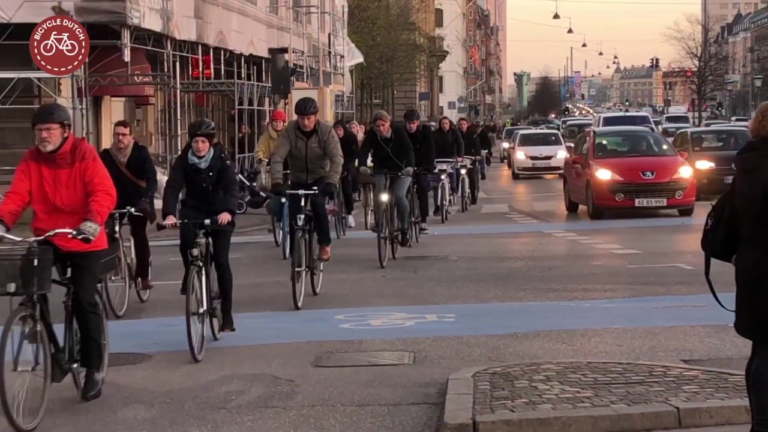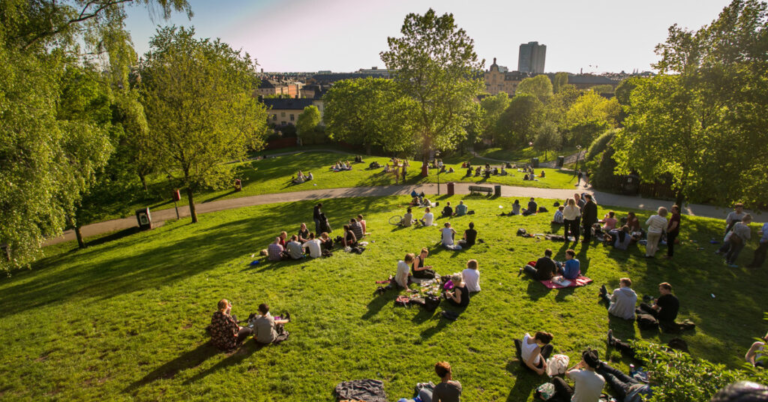Livable community: creating a happy life for people
‘For me, I just hope to live in a better environment, without any illegal construction, with the roads flat and the streets clean. In fact, to put it bluntly, for ordinary people like me, happiness is to get real changes and improve our quality of life and living standards.’ With the acceleration of urbanization, the requirements of residents living in modern cities for quality of life are also increasing. In this context, the concept of “livable community” has gradually become an important goal for urban designers to carry out urban planning and design. So, what is a livable community? In my opinion, it is not just a place for people to live, but also an environment that can promote health, happiness, and social connection.
In the early days of urban design, designers like Camillo Sitte focused mainly on the appearance of the city. They believed that by planning winding streets and well-designed squares, cities could become more beautiful and attractive. People believed that by beautifying the city, the living standards and social literacy of residents could be improved. But as cities continued to develop, Jane Jacobs (2000) criticized the flaws of modernist urban planning in her book “The Death and Life of Great American Cities”, she especially emphasized that the vitality of the city comes from the interaction and flow of people on the streets, not just the arrangement of buildings.
Today, cities are made up of communities, and communities are made up of residents. A livable community first needs to take into account the needs of people. According to my survey and actual experience, a livable community usually has the following core characteristics:
Convenient public infrastructure: A livable community needs to have complete public supporting service facilities, including schools, medical centers, shops and cultural venues. These facilities should preferably be within walking or cycling distance of residents. For example, in Paris’ 15-minute city (see Fig. 1), whether going to school, shopping or seeing a doctor, you can try to walk within 15 minutes, and try to meet the living needs of residents within walking distance (Mordechai, 2021).
Fig. 1 – A CONVENIENT CITY: This illustration shows how neighborhood design could let people meet their daily needs, stay in touch with neighbors, and save time.
Walkability: A livable community should give priority to walking and cycling, design convenient pedestrian and bicycle paths, and reduce dependence on private cars. This not only helps the physical health of residents, but also reduces traffic congestion and air pollution. For example, Copenhagen, Denmark, is a famous bicycle city (see Fig. 2). It can be said that bicycles are part of the lives of Copenhageners. Cycling can help residents improve their health, relieve traffic pressure, and reduce air pollution (BicycleDutch, 2018).
Fig. 2 – CYCLING IN COPENHAGEN.
Abundant green space: A livable community should have sufficient green space, increase plant diversity, carry out green classification, and build an ecological civilization. For example, Zurich’s public parks are also a great asset to the city. There are about 70 parks and nature areas scattered throughout the city, providing residents with ample opportunities for picnics, chatting, reading, walking, relaxing, and also hosting art exhibitions, making Zurich a real open-air museum (Bolt, 2022). Large green spaces such as eco-parks not only provide places for urban residents to relax and have fun, but also improve air quality and regulate urban temperature. Green governance is an indispensable and vital part of community development (see Fig. 3).
Fig. 3 – PUBLIC GREEN SPACE.
Sustainable development: A livable community should focus on the sustainable use of resources. Nowadays, with the construction of ecological civilization, more and more residents are investing in the construction of green and sustainable development, such as promoting the use of energy-saving and emission-reduction technology materials, renewable energy, and garbage sorting and recycling. Residents are increasingly aware that everyone is a builder of the community.
A livable community is not only an optimization of a physical space, but also an advocacy of a lifestyle. By improving the accessibility, comfort and inclusiveness of the community, a livable community can improve the mental health of residents, reduce social inequality, and promote economic development. For example, Copenhagen, with its high-quality public spaces and bicycle-friendly policies, is widely regarded as a model of livable cities around the world. As Gehl (2010) pointed out, people desire a vibrant, safe, sustainable and healthy city, and a well-designed bicycle infrastructure can help meet these needs.
The construction of a livable community requires the joint efforts of the government, designers and residents. Through people-centered design concepts and sustainable development practices, we can create an ideal living environment that meets contemporary needs and benefits the future. A livable community is not only an improvement in the quality of life, but also a commitment to social and environmental responsibility.
List of Figures
Figure 1 – A CONVENIENT CITY: This illustration shows how neighborhood design could let people meet their daily needs, stay in touch with neighbors, and save time. Photo from Micael.
Figure 2 – CYCLING IN COPENHAGEN. Photo from internet (BicycleDutch (2018) Is Copenhagen a City of Cyclists? Available at: https://bicycledutch.wordpress.com/2018/11/27/is-copenhagen-a-city-of-cyclists/ (Accessed: 11 December 2024).).
Figure 3 – PUBLIC GREEN SPACE. Photo from internet (Bolt (2022) What do the world’s most liveable cities have in common? https://bolt.eu/en/blog/what-do-the-worlds-most-liveable-cities-have-in-common/ (Accessed: 11 December 2024).).
List of Reference
BicycleDutch (2018) Is Copenhagen a City of Cyclists? Available at: https://bicycledutch.wordpress.com/2018/11/27/is-copenhagen-a-city-of-cyclists/ (Accessed: 11 December 2024).
Bolt (2022) What do the world’s most liveable cities have in common? https://bolt.eu/en/blog/what-do-the-worlds-most-liveable-cities-have-in-common/ (Accessed: 11 December 2024).
Gehl, J. (2010) Cities for people. Washington, DC: Island Press.
Mordechai, R. (2021) Reimagining Cities. Available at: https://www.timeforkids.com/g56/reimagining-cities-2/?rl=en-910 (Accessed: 11 December 2024).
Jacobs, J. (2000) The death and life of great American cities. London: Pimlico.






Great post Caiye He! I really enjoyed the example of the 15-minute Paris demonstrated by the graphic. In the article you explored the core characteristics of what a liveable community has, whilst I agree with the four characteristics of; convenient public infrastructure, walkability, abundant green space and sustainable development, I believe there are other core characteristics that are essential to the level of liveability within a community, especially to achieve an active 15-minute neighbourhood.
These are general assets. These contribute to community value and ownership within the community which ensures local people have access to basic amenities without needing to use public transport or private cars. Areas where there are high indexes of deprivation will thrive from having access to the following assets: community / social, education, green, leisure, food and beverage, medical, religion, retail, sports, transport, Yeme Tech (2024). All of these assets with fall within a use class which can be accessed via government portals, assessment of these use classes when developing urban projects is crucial to ensure a communities vitality and growth. So meanwhile you mentioned walkability, this does not only entail the promotion of walking and cycling but also how walkable a 15-minute neighbour is to these general assets.
This newly engaged mapping of general assets support Jane Jacobs (2000) criticism of the flaws of modernist urban planning and commits to shifting the perspective that creating a happy life for people does not just come from the arrangement of buildings but the flow that is created from analysing communities assets and how it connects highstreets with the wider context. Policy has favoured new out of town retail formats and operations which poses particular stress on these local highstreets. Since the mid-1990s town centre development has been restricted and despite the overt policy of supporting highstreets maybe the impacts on general assets needs to be addressed within new policy to enable communities to thrive and be well connected to one another, Neil Wrigley (2014).
This blog revolves around “Livable Community” and delves into how modern urban design can improve residents’ quality of life, highlighting core features and their importance.
The blog cites multiple classic theories and practical cases, such as Camillo Sit’s emphasis on urban aesthetics, Jane Jacobs’ (2000) critique of modern urban planning, and Gehl’s (2010) exploration of livable city characteristics. This combination not only enhances the persuasiveness of the argument, but also makes it easier for readers to understand the practical application of the concept.
The blog has established core standards for livable communities through four aspects: Convenient public infrastructure, walkability, Abundant green space, and sustainable development. Each section provides specific case support, with clear logic and a sense of hierarchy. Special emphasis is placed on the human centered design concept, paying attention to the actual needs of residents, such as convenient living facilities, comfortable walking environment, and ecological space. This humanistic ideology is highly compatible with the pursuit of health, happiness, and social connectivity in contemporary urban planning. For example, the cycling culture in Copenhagen, Cycling can help residents improve their health, relieve traffic pressure, and reduce air pollution (BicycleDutch, 2018). It demonstrates the positive effects of sustainable travel on urban health, transportation, and the environment.
At the same time, the author calls on the government, designers, and residents to work together, reflecting a sense of solution awareness. Through cooperation and sustainable development practices, long-term commitments to society and the environment can be achieved.
What I want to say is that blog uses cities such as Paris, Copenhagen, and Zurich as examples, which are representative but mainly focused on European backgrounds. The concept of livable communities may vary among cities with different cultures and levels of development. For example, how to balance the relationship between population density and public space in cities in Asia or developing countries? I think adding cultural and localization perspectives would make the discussion more comprehensive.
Overall, this blog has a clear structure and insightful viewpoints, which can stimulate further thinking on urban planning, lifestyle, and sustainable development.
Reference:
1. BicycleDutch (2018) Is Copenhagen a City of Cyclists?
2. Gehl, J. (2010) Cities for people. Washington, DC: Island Press.
3. Jacobs, J. (2000) The death and life of great American cities. London: Pimlico.